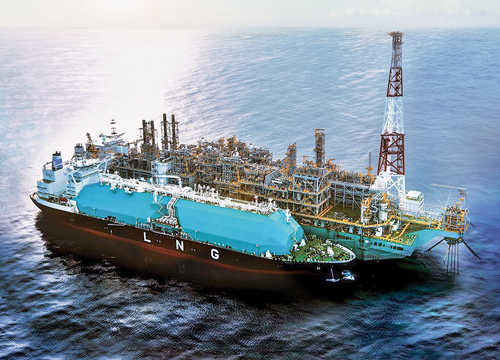Editorial Comment: The Future of FLNG: Less is More?
Global LNG export capacity is expected to increase by 45% between 2017 and 2022, to more than 400 metric MMtpy, with 90% of the new capacity coming from sanctioned projects in the U.S. and Australia. By 2050, this capacity is anticipated to exceed 700 MMtpy. Regasification capacity is anticipated to increase even more sharply.
Growing volumes of these production and import capacities will come in the form of floating liquefaction (FLNG) and regasification (FRGU) vessels. FLNG projects backed by major oil and gas firms and supported by adequate gas reserves and LNG demand are the most likely to achieve completion. Africa and Asia are viewed as key areas for liquefaction and regasification spending. Australian FLNG projects also have a good chance of moving forward, as they will be in close proximity to Asian countries with growing LNG demand.
However, according to a 2019 survey of LNG industry professionals by DNV GL, the industry will prefer smaller FLNG projects and tanker conversions in the future over massive FLNG projects. The first FLNG vessel to come online was Petronas’ $2-B, 1.2-metric-MMtpy PFLNG1 project (Fig. 1), started up in November 2016 offshore Sarawak, Malaysia. In March 2019, Petronas announced that it had relocated the vessel from the Kumang cluster field to the Kebabangan cluster field, offshore Sabah.
 |
|
Fig. 1. Petronas’ PFLNG1 vessel was the world’s first floating liquefaction plant, commencing operations 3 yr ago offshore Malaysia. |
Shell’s Prelude, pictured on the front cover, is the largest seafaring vessel ever built at 488 m long and 74 m wide. The long-awaited Prelude FLNG vessel, located offshore Broome, Western Australia, shipped its first cargo in June 2019. Shell and its partners produce an impressive 3.6 MMtpy of LNG, 1.3 MMtpy of condensate and 400,000 tpy of LPG on the floating facility, which cost more than $12 B to construct.
In the future, however, smaller vessels may have several advantages. Smaller-scale FLNG vessels are cheaper to build and operate, faster to deploy and effective at exploiting smaller volumes of stranded gas and serving niche markets. In these scenarios, it is more likely that a contractor will liquefy gas on behalf of the operator of the vessel, thereby reducing risk by purchasing a service rather than buying an asset.
For more in-depth information and forecasts for market trends, construction projects and spending in the LNG/FLNG and gas processing sectors, please see the Natural Gas/LNG section of the “HPI Market Data 2020” report, published by Hydrocarbon Processing in November and available for purchase at www.hydrocarbonprocessing.com/market-data/hpi-market-data-book GP




Comments